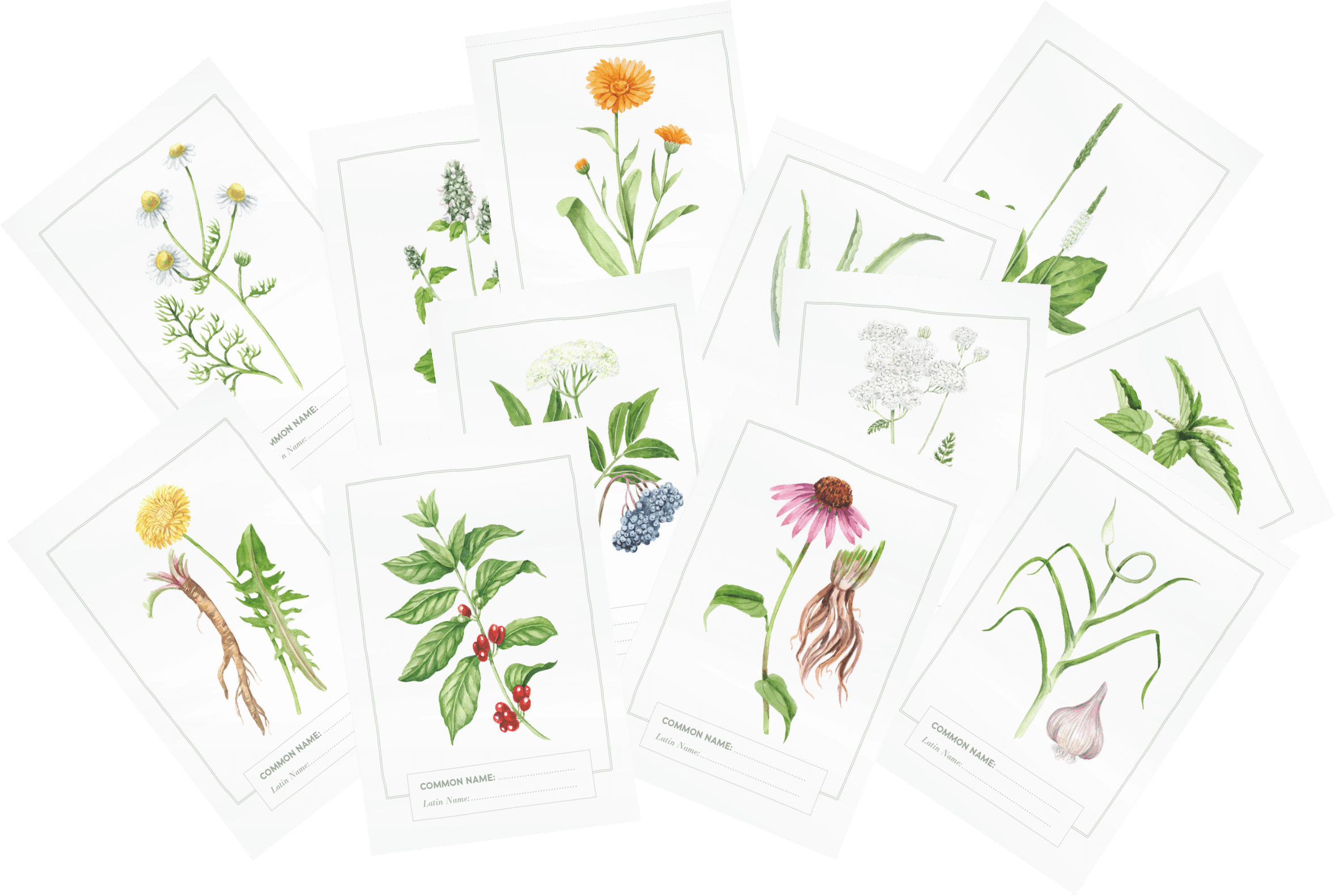Just one look at a radiant calendula (Calendula officinalis) flower is enough to make anyone fall in love. With its uplifting blossoms and dainty leaves, it’s no wonder that this easy-to-grow plant has become an incredibly popular ornamental. But calendula’s gifts go far beyond its looks — this common herb has long been used in traditional herbal remedies to support health and vitality in a variety of ways.
So, let’s dive into 3 benefits of calendula…
1. Calendula Benefits: Promoting Healthy Skin
Calendula is often heralded as herbalists’ go-to herb for skin care. Whether you’re looking for a daily serum or a first-aid healing salve, calendula’s nourishing, anti-inflammatory properties make it a wonderfully versatile skin care ally.
Calendula particularly excels at supporting mild itchy, red, dry skin conditions, including but not limited to insect bites, rashes, dandruff, and burns. As an antimicrobial vulnerary, calendula also promotes tissue repair and can be worked with to support mild wounds. Plus, working with calendula topically can also prevent scarring. Given how versatile calendula is, it’s no wonder that it’s so many herbalists favorite herb for addressing skin irritation and promoting skin health.
I have very sensitive skin, and incorporating calendula into my everyday skin routine as a calendula cream and calendula oil serum has noticeably reduced my recurrence of acne and kept my skin feeling nourished and healthy.
2. Calendula Benefits: Supporting Digestive Health
Just as calendula can promote tissue repair when applied topically, it can also support the health of the tissues along our G.I. tracts when consumed as a tea. This tissue repairing action can be attributed to calendula’s vulnerary and anti-inflammatory activity. Calendula also pairs this anti-inflammatory action with its bitter flavor, which promotes secretions throughout the G.I. tract.
When I have an upset stomach or stagnant digestion, I often combine 1 teaspoon calendula with 1 teaspoon plantain leaf and 1 teaspoon spearmint for a soothing tea. I find that this tea calms my digestion and helps stabilize my appetite.
If I have access to the fresh calendula flowers, I also enjoy adding the petals of calendula to salads and broths for a mild bitter flavor and beautiful pop of color.
3. Calendula Benefits: Bolstering Immune Health
Oftentimes people forget about calendula’s effect on the immune system: calendula is a powerful immune stimulant and antimicrobial herb. At the first sign of a cold or sore throat, I often use that same digestive tea blend I noted above (1 part calendula flowers, 1 part plantain leaf, and 1 part spearmint) as a mouthwash and gargle to bolster my immunity. I find this tea super helpful for reducing sore throats’ duration and sinus congestion.
In addition to stimulating the immune system, calendula can also help stimulate lymphatic drainage when there is stagnant lymph. The lymphatic system is an important part of the immune system: the lymph itself contains immune cells and also helps carry away waste in our body. By promoting lymphatic flow, calendula can help the immune system work more effectively.
To support lymphatic drainage, I work with calendula both topically as an oil and internally as a simple tea or tincture.
Want to Learn More About Calendula’s Benefits?
Now that you’ve learned a little bit about the health benefits of calendula, you might be wondering how you can learn more about the medicinal properties of this powerful plant.
Well, here’s the easy way to get more info about calendula: download a FREE deck of our top 12 Herb Notes here. You’ll learn all about the medicinal properties of calendula plus 11 other common herbs like echinacea, dandelion, and more.
PS… And before I go, I couldn’t help but answer a few frequently asked questions about calendula..
What Remedies Can I Make with Calendula?
There are so many wonderful calendula products you can make! I love making calendula ointments, tea, tincture, oil, creams, and more. I encourage you to experiment with your preparations of calendula flower — it’s so fun to experiment with calendula blossoms because the calendula plant is so abundant, versatile, and gentle.
Can I use Calendula On Sensitive Skin?
Everyone’s skin is different, so it’s important to start slow with incorporating a new herb into your skincare routine — especially if you have sensitive skin. When I work with a new herb topically, I tend to test a patch of it on my wrist to see how my body responds. If I don’t get a reaction within the next 2 days then I work with the herb more. If my body reacts unfavorably to the herb (e.g., if I see visible signs of irritated skin where I applied the herbal extract on my wrist), then I don’t work with it more.
People tend to find that calendula is very gentle and works well with delicate skin, and this has been my experience as well. If you are allergic to plants within the Aster family, however, then it would be wise to avoid working with calendula, which is in this plant family.
Are Calendula and Marigold the Same Plant?
Calendula has many common names, including pot marigold and garden marigold. Calendula is different, however, than the Tagetes spp. marigold.










Thank you!!
You are welcome, Wanda! I am glad you like the article!
Very informative, in fact riveting . Thank you!
Great that you enjoy Tara’s article, Marijke!
Great info. I will try some of the tea soon. Do you know if this herb is ok to use on dogs for skin issues?
Thanks Sharon! I hope you enjoy the tea! I am not trained in animal herbalism so I am not sure about dogs.
If fresh honey is used, the nutritional value will be compromised by simmering over 100 *. In this recipe, could the less expensive heated/processed (grocery store) honey be used to make the cough syrup and have it be just as effective for that purpose?
Hi Polly, you can use any honey you like for cough syrups!